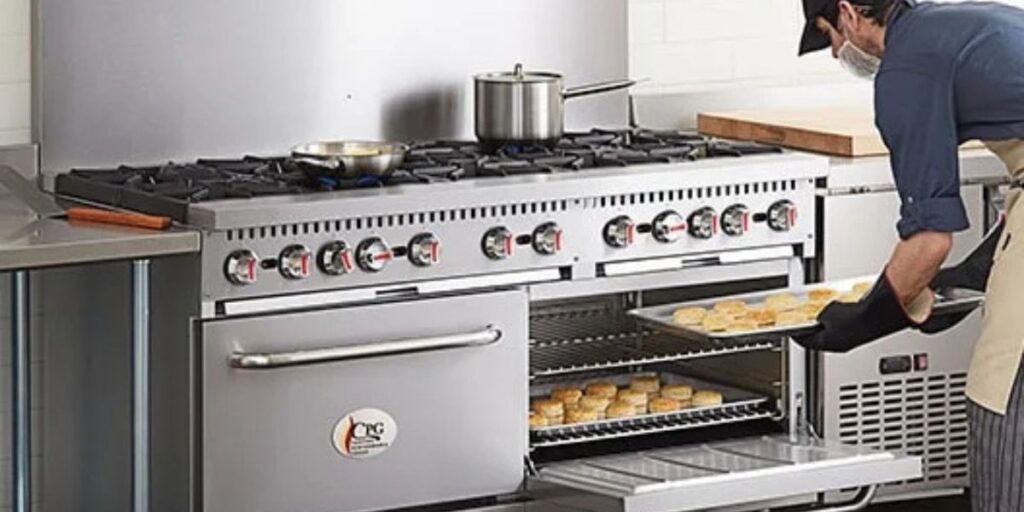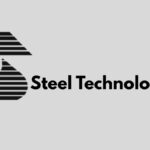Setting up a commercial kitchen is no small feat, whether for a bustling restaurant, a catering business, or a bakery. It involves more than just a love for food; it requires strategic planning and an investment in high-quality commercial restaurant equipment and commercial kitchen equipment. These tools form the backbone of your operations, ensuring efficiency, safety, and consistency.
In this article, we’ll delve into the essentials of commercial restaurant and kitchen equipment, covering the critical categories, factors to consider before purchasing, and tips for maintaining and upgrading your gear. Whether you’re an experienced restaurateur or a budding entrepreneur, understanding this topic can help you create a kitchen that meets industry standards and exceeds customer expectations.
What Is Commercial Kitchen Equipment?
Commercial kitchen equipment refers to the appliances, tools, and systems designed specifically for large-scale food preparation and service. Unlike household appliances, these are built to handle high-volume cooking, offer greater durability, and comply with health and safety regulations. From ovens and fryers to refrigeration units and dishwashers, this equipment plays a crucial role in ensuring smooth kitchen operations.
Essential Categories of Commercial Kitchen Equipment
1. Cooking Equipment
Cooking equipment is the cornerstone of any commercial kitchen. This category includes:
- Ranges and Ovens: These are indispensable for any kitchen, with options like convection ovens, deck ovens, and combi ovens offering versatility for various cuisines.
- Grills and Griddles: Perfect for grilling meats, vegetables, and even sandwiches.
- Fryers: Deep fryers are essential for preparing crispy, fried delicacies like fries, chicken, and seafood.
- Microwaves and Steamers: For quick reheating or steaming vegetables and seafood.
2. Refrigeration and Freezing Equipment
Maintaining the freshness of ingredients is paramount. Key refrigeration equipment includes:
- Walk-In Coolers and Freezers: Ideal for bulk storage of perishable items.
- Reach-In Refrigerators: Convenient for storing ingredients you need regularly.
- Under-Counter Refrigeration Units: Space-saving options that fit seamlessly into the kitchen workflow.
3. Food Preparation Equipment
Efficient food preparation minimizes labor and improves consistency. Must-have items include:
- Mixers: For bakeries, pizza shops, and restaurants offering baked goods, industrial mixers are vital.
- Food Processors: Speed up chopping, slicing, and mixing tasks.
- Blenders: High-power blenders are essential for smoothies, soups, and sauces.
- Meat Slicers: Ensure uniform slices for deli meats and cheeses.
4. Storage Solutions
Proper storage is critical for both raw and cooked food:
- Shelving Units: Stainless steel shelves are ideal for dry storage.
- Ingredient Bins: Keep flour, sugar, and other essentials organized and accessible.
- Cambros and Food Pans: For safe and hygienic storage of prepped ingredients.
5. Cleaning and Sanitation Equipment
Cleanliness is non-negotiable in the food industry. Essential cleaning equipment includes:
- Dishwashers: High-capacity machines for washing dishes, utensils, and glassware.
- Mop Sinks and Floor Drains: Ensure easy cleaning of floors and surfaces.
- Sanitizing Stations: For maintaining hygiene among staff and customers.
6. Serving and Display Equipment
How you present food impacts customer experience:
- Buffet Warmers: Keep food warm and presentable during service.
- Display Cases: Perfect for bakeries and delis to showcase offerings.
- Chafing Dishes: Ideal for catering events and self-serve buffets.
Factors to Consider When Choosing Commercial Kitchen Equipment
Selecting the right equipment is a significant decision that impacts your kitchen’s productivity and profitability. Here are the key factors to consider:
1. Space Availability
Before purchasing, evaluate your kitchen’s layout. Measure available space and plan how equipment will fit. Compact and multifunctional units can save space without sacrificing utility.
2. Menu Requirements
Your menu determines the type of equipment you need. For example, a pizzeria requires specialized ovens, while a sushi bar needs refrigeration with precise temperature control.
3. Energy Efficiency
Energy-efficient equipment reduces operational costs and is environmentally friendly. Look for ENERGY STAR-rated appliances for long-term savings.
4. Durability and Material
Commercial kitchens operate under demanding conditions. Opt for stainless steel equipment, which is durable, easy to clean, and resistant to corrosion.
5. Compliance with Regulations
Ensure that your equipment meets local health and safety codes. Non-compliant gear can result in fines and operational delays.
6. Warranty and Support
Invest in equipment with robust warranties and reliable after-sales support. This ensures peace of mind in case of malfunctions.
The Importance of Maintenance and Upgrades
Regular maintenance ensures that your equipment performs optimally and lasts longer. Here are some maintenance tips:
- Daily Cleaning: Prevents buildup of grease and debris, which can damage equipment.
- Scheduled Inspections: Identify potential issues before they become costly problems.
- Timely Repairs: Address minor issues promptly to avoid major breakdowns.
- Software Updates: For smart kitchen equipment, ensure software is updated for maximum efficiency.
Upgrading your equipment periodically keeps your kitchen competitive. Modern appliances often feature advanced technology, such as programmable settings and IoT connectivity, enhancing productivity.
Popular Brands in Commercial Kitchen Equipment
Several reputable brands dominate the market for commercial restaurant equipment. These include:
- Vulcan: Known for reliable cooking equipment.
- True Refrigeration: Renowned for durable and efficient refrigeration solutions.
- Hobart: A leader in dishwashing and food preparation equipment.
- Robot Coupe: Specialists in food processors and preparation tools.
- Turbo Air: Offers an extensive range of refrigeration products.
Buying New vs. Used Equipment
When setting up a kitchen, you might wonder whether to buy new or used equipment. Each option has its pros and cons:
Advantages of New Equipment
- Comes with warranties and technical support.
- Features the latest technology and efficiency standards.
- More reliable and less prone to breakdowns.
Advantages of Used Equipment
- Lower upfront costs.
- Suitable for startups with budget constraints.
- Availability of pre-owned but lightly used items.
While used equipment is more affordable, always inspect it for wear and ensure it complies with regulations before purchasing.
The Role of Technology in Modern Commercial Kitchens
Technology is transforming commercial kitchens, making them smarter and more efficient. Some innovations include:
- Automated Cooking Systems: Equipment like combi ovens can be programmed to perform multiple tasks with minimal supervision.
- IoT Integration: Smart appliances connected to the Internet of Things (IoT) allow real-time monitoring of performance and maintenance needs.
- Energy Management Systems: Track energy consumption and optimize usage to reduce costs.
- Touchscreen Controls: User-friendly interfaces simplify operation and training.
Tips for Financing Commercial Restaurant and Kitchen Equipment
Purchasing Commercial Restaurant and Kitchen Equipment is a significant investment. Here are ways to manage costs:
- Leasing Options: Spread out payments while using the latest equipment.
- Equipment Financing: Secure loans tailored for purchasing kitchen gear.
- Buy in Bulk: Save money by purchasing multiple items from a single supplier.
- Look for Discounts: Take advantage of sales, promotions, and seasonal offers.
Creating a Sustainable Kitchen
Sustainability is a growing priority in the foodservice industry. Incorporating eco-friendly practices can benefit both the environment and your bottom line. Here’s how:
- Invest in Energy-Efficient Equipment: Reduces energy consumption and utility bills.
- Minimize Waste: Use equipment that helps portion food accurately.
- Recycle and Compost: Set up systems for recycling packaging and composting food waste.
- Opt for Sustainable Suppliers: Choose equipment made from recyclable materials.
Conclusion
Equipping your commercial kitchen with the right commercial restaurant equipment and commercial kitchen equipment is crucial to your business’s success. From choosing durable and energy-efficient appliances to planning for regular maintenance and upgrades, each decision impacts your kitchen’s efficiency and profitability.
As the food industry evolves, staying informed about the latest innovations and practices ensures your kitchen remains competitive. By investing wisely, you’ll not only enhance your operations but also provide exceptional experiences for your customers.







